Built on the tip of Marco Island in 1982 and destroyed by Hurricane Ian 40 years later, the Cape Romano dome house was a unique cluster of igloo-shaped units perched on stilts and connected by walkways.
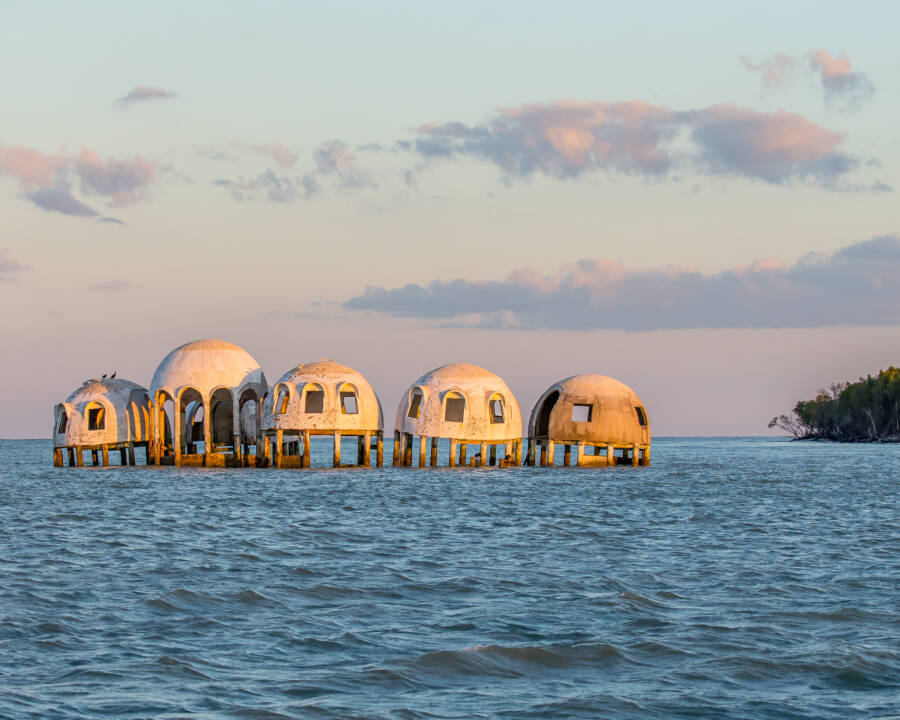
Andy Morffew/Wikimedia CommonsThe Cape Romano dome house, abandoned off the coast of southwest Florida, in 2016.
In September 2022, the remains of the famed Cape Romano dome house were destroyed by Hurricane Ian, a category 4 storm that reached peak intensity while over the house’s location in southwest Florida.
Originally built in 1982 by an eccentric businessman and amateur inventor, this peculiar stilted house had been abandoned just 10 years after it was built, when its interior was destroyed by Hurricane Andrew. The house had sat empty ever since, and over the years, its stark white exterior became discolored and worn down from seasons of neglect as the ground was washed away from beneath it.
Decades of harsh weather and rising sea levels pushed the structures past their limit, and it took another two hurricanes, Irma and Ian, to bring them down at last.
But though the Cape Romano dome house no longer stands, its sunken domes still sit just under the surface, a bizarre reminder of the truly one-of-a-kind house built 40 years before.
Building The Iconic Cape Romano Dome House
In the late 1970s, Bob Lee, an independent oil businessman who retired at 44, and his wife, Margaret, dreamed of building a vacation home on the southern coast of Florida. They began buying plots of land on Cape Romano, just a few miles off the southern tip of Marco Island.
By 1980, they had accumulated enough land, and the project began.
But this wasn’t just any dream vacation home. This would be the Cape Romano dome house, a genuine curiosity, idiosyncratically designed by an amateur inventor who loved to tinker.
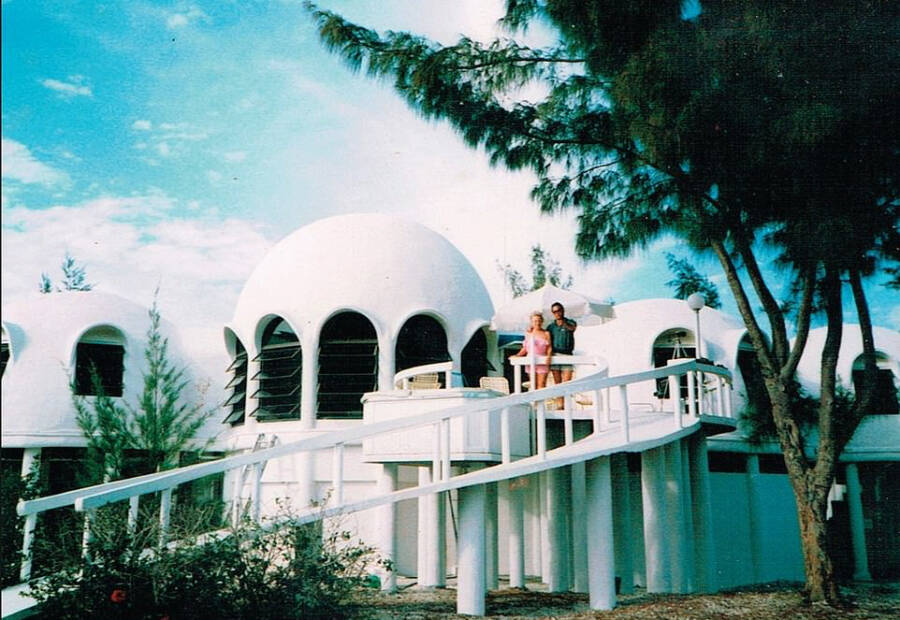
FacebookThe Cape Romano dome house during its better days.
The 2,400-square-foot structure was made of six dome sub-units, some of which had multiple floors, all connected by wooden walkways.
But beyond its unique design, the house was also constructed with various self-sustaining features and contraptions.
The House’s Self-Sustaining Design
The Cape Romano dome house ran on solar power. What’s more, it was fitted with gutters that collected rainwater into a tank, where the water was purified for the residents’ use.
The very cement materials of the house’s construction came from the sand of the island it stood on, and even the domes’ shape was designed to help the house withstand the edge-seeking winds of a hurricane.
According to Bob Lee’s daughter, Janet Maples, Lee sincerely enjoyed creating the strange structure and figuring out new ways to make life on the island easier. He even went so far as to build a full-scale model near his home in Tennessee.
“He loved inventing things,” Maples told Coastal Breeze News in 2012. “He invented a heat source for under the floors of our house and had an invention that would bring logs in and drop them on the fireplace that came through the wall of our den. Kids loved him. He was just fun to be around; a really adventurous guy way before his time.”
Life In The Dome House
After the Cape Romano dome house was completed in 1982, the family used it as a vacation home for a time, but the Lees eventually sold it just two years later. The new owners struggled financially, and three years after they’d sold it, Lee and his family foreclosed and moved back in.
After that, Bob and Margaret Lee, their daughter Janet Maples, and Maples’ husband and child lived on the island full-time.
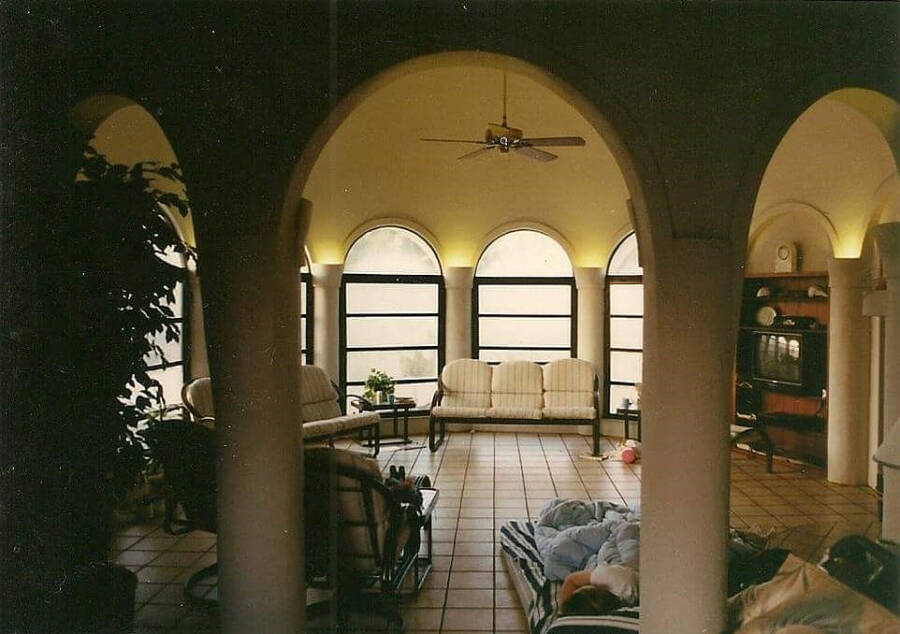
Janet MaplesThe interior of one of the domes.
“It was a real adventure,” Maples told Weather.com. “It really was. It was an amazing experience.
Maples said nighttime at the house was “like being on another planet.”
“The stars, everything, with there being no light out there, it was just absolutely beautiful,” she said.
But the happy days of relaxing beach life wouldn’t last forever.
The Lee Family Gives Up On Its Dream Home
Eventually, Cape Romano dome house’s bold design and location began to work against it more than sustain it. In 1992, Hurricane Andrew swept through the region, and although the home’s sturdy construction easily withstood the storm, its windows did not. The house’s interior was ruined, and the family decided to abandon it.
Even still, among the three homes on the island at the time, the dome house fared the best — but it, too, had numbered days.
Over the next decade, water levels rose, the shore eroded, and the house’s pillars eventually began to stand in the water rather than on dry land.
According to USA Today, Lee sold the building for $300,000 in 2005 to John Tosto, who had grand plans to lift the entire thing and move it elsewhere on the island where it would be safer. The project, though ambitious, was only supposed to take around three to four months.
The move never happened.
The Dome House Falls Into Disrepair
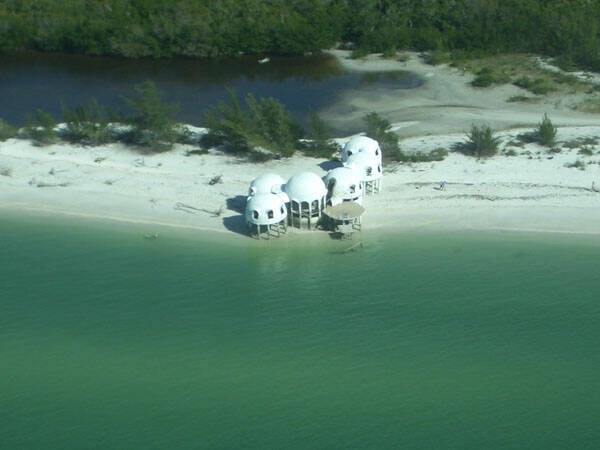
Obsession911/Wikimedia CommonsThe Cape Romano dome house in 2004, shortly before it was sold for $300,000.
In the ensuing years, hurricanes, regulatory bodies, and the financial demands of the property stymied Tosto at seemingly every turn.
First, Hurricane Wilma and its 120-mile-per-hour winds arrived just a month after the purchase, further eroding the beach and damaging the building. Then, in 2007, Collier County deemed the structure uninhabitable and ordered Tosto to destroy the home. When he did not, the county began fining Tosto — initially small amounts that accumulated into hundreds of thousands in fines.
“It was just beautiful at one time,” Maples said of the deteriorating home in 2012. “It would break Daddy’s heart to see it like it is, but what he always said before he died was that it was worth it for the time he had it.”
In 2014, Collier tax officials put the Cape Romano dome house’s property value at just $125 — around 2,400 times less than what Tosto paid in 2005.
The house now sat around 100 feet from the shore as the waters rose around it. Two years later, it would be 200 feet from the coast. In 2018, ownership officially transferred to the state.
The Self-Sustaining Home Becomes One With Nature
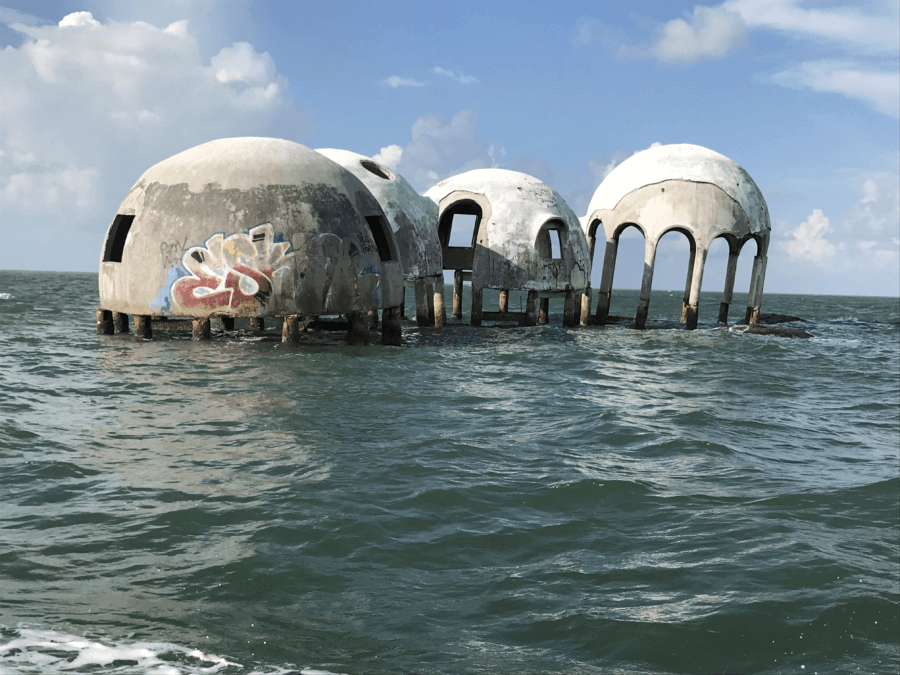
Flyhighnewport/Wikimedia CommonsThe dome house’s remaining units in 2019, just a few years before they would disappear under the waves.
The Cape Romano dome house spent the next few years languishing, inching farther away from land and descending deeper into the sea.
The domes, poking out of the water, were a decaying reminder of the house’s former glory, but they gained a second life over the last decade of their existence as all manner of ocean creatures flocked to make them their home.
In 2013, Cynthia Mott traveled to the domes for Florida Weekly and wrote of the surprising biodiversity she discovered there while snorkeling.
“I’ve snorkeled Grand Cayman, Mexico and Fiji, yet have never witnessed a more diverse, crowded concentration of undersea life than what has taken up residence under the remnants of those domes,” Mott wrote. “It was as if all the fish and rays living along that part of the Collier County coast decided to hangout in one location.”
At one point, a children’s ocean education group put together a campaign to pay to relocate the domes to a more accessible location to better suit the ocean life and offer an educational experience for kids. The venture failed to meet its goals, however, and the domes stayed where they were.
The Sinking Of The Cape Romano Dome House
At the start of 2017, all six of the house’s domes sat above the water level. But that year, another tropical storm, Hurricane Irma, would hasten the odd creation’s decline. Amid the tempest, two of the house’s domes fell into the ocean. Four remained.
It took a final hurricane in 2022 to definitively send the singular experiment to its watery grave, as Hurricane Ian bombarded the area, sinking the remaining domes.
The Cape Romano dome house was finally gone.
“He would feel sad that it was gone,” Janet Maples said of her father in 2019, “but I also think he was the kind of person that would think, ‘I hope some fishes can enjoy living in it. I hope that something can get some good out of it.'”
After reading about the Cape Romano dome house, read about over 40 other abandoned houses from around the world. Then, learn about another early adopter of sustainable design: Frank Lloyd Wright.





